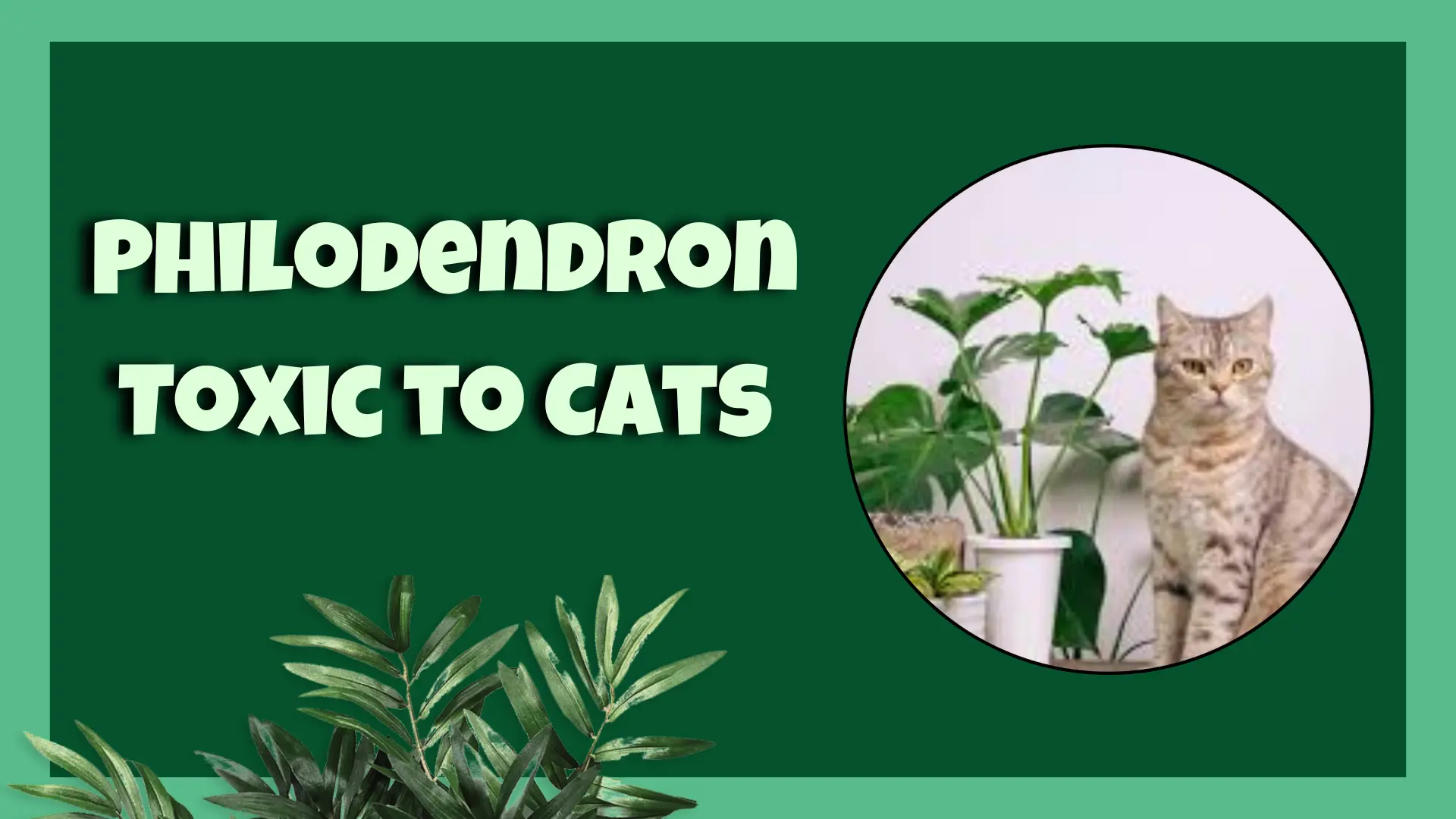Philodendrons are among the most beloved indoor plants, admired for their lush green leaves and low-maintenance nature. But if you’re a cat parent, you might be wondering: Is philodendron toxic to cats? The short answer is yes. While philodendrons add beauty to your home, they can pose serious health risks to your feline friend. In this guide, we’ll break down everything you need to know about philodendrons, why they’re toxic, the symptoms of poisoning, and how to keep your cat safe.
What is a Philodendron?
Philodendrons are tropical plants that thrive indoors with minimal care. They come in many varieties, from trailing vines to upright climbers, making them a favorite for houseplant lovers.
Why are Philodendrons Popular as Houseplants?
People love philodendrons because they’re resilient, adapt well to low light, and bring a fresh, tropical vibe to indoor spaces. Their air-purifying qualities are an added bonus. Unfortunately, what makes them great for your living room might not be so great for your furry companion.
Are Philodendrons Toxic to Cats?
Yes, philodendrons are toxic to cats. The danger lies in their sap, which contains calcium oxalate crystals.
The Role of Calcium Oxalate Crystals
These needle-like crystals are sharp and irritating. When a cat chews on the plant, the crystals can lodge into its mouth, gums, and throat, causing pain and swelling.
Why Cats are at Risk
Cats are naturally curious creatures. Their habit of nibbling on leaves can lead them straight into trouble. Even small bites can cause discomfort and health issues.
Symptoms of Philodendron Poisoning in Cats
Knowing the signs of poisoning can help you act fast.
Early Warning Signs
- Drooling excessively
- Pawing at the mouth
- Refusing food
- Mild swelling of lips or tongue
Severe Symptoms to Watch Out For
- Vomiting
- Difficulty swallowing
- Swollen throat leading to breathing issues
- Lethargy and weakness
What to Do if Your Cat Eats Philodendron
Immediate action is crucial.
First Aid at Home
If you catch your cat nibbling on a philodendron, rinse its mouth with clean water to help remove any sap. Keep them calm and hydrated.
When to Call the Vet
Contact your vet immediately if symptoms escalate. Bring a sample of the plant with you so the vet knows exactly what your cat ingested.
How Vets Diagnose Philodendron Poisoning
Physical Examination
Your vet will check for mouth irritation, swelling, and signs of discomfort.
Diagnostic Tests
In some cases, blood work or imaging may be needed to rule out further complications.
Treatment Options for Philodendron Toxicity
Immediate Care
Vets may use pain relief, anti-inflammatory medication, or fluids to reduce irritation.
Ongoing Supportive Treatment
Cats may need monitoring until symptoms fade. In severe cases, hospitalization ensures your pet stays safe and stable.
How Dangerous is Philodendron for Cats?
Fatal vs. Non-Fatal Risks
Most cases of philodendron poisoning are not fatal but can be very uncomfortable for your cat. Severe swelling can lead to choking hazards, which makes it dangerous if not treated quickly.
Prevention: Keeping Your Cat Safe
Smart Plant Placement
Keep philodendrons on high shelves or in hanging baskets where your cat can’t reach them.
Training and Deterrents
Use pet-safe sprays or gentle training techniques to discourage plant chewing.
Alternative Safe Plants
Replace toxic plants with cat-friendly options to avoid risks altogether.
Cat-Safe Alternatives to Philodendron
Spider Plant
Safe for cats and fun to grow, spider plants are an excellent choice.
Areca Palm
This tropical beauty adds elegance without harming pets.
Calathea
With vibrant patterned leaves, calatheas are non-toxic and stunning.
Why Cats are Attracted to Houseplants
Curiosity and Play
Cats love exploring textures and playing with dangling leaves.
Digestive Relief
Sometimes cats chew plants to aid digestion or mimic grass-eating behavior.
What Other Plants are Toxic to Cats?
Common Household Plants to Avoid
- Peace lily
- Dieffenbachia
- Pothos
- Sago palm
Safer Plant Choices
Opt for catnip, cat grass, or bamboo palms instead.
Tips for a Pet-Friendly Indoor Jungle
Choosing Plants Wisely
Research before buying. A little planning goes a long way.
Creating Safe Zones
Designate pet-friendly corners with only safe plants so your cat can explore freely.
Expert Opinions on Philodendrons and Pets
Veterinarians’ Recommendations
Most vets advise keeping philodendrons out of households with curious pets.
Pet Owners’ Experiences
Many cat parents share stories of unexpected nibbles, leading to expensive vet visits. Prevention is always cheaper and safer.
Conclusion
Philodendrons may be beautiful, but they are toxic to cats. Even small nibbles can lead to pain and health risks. The best way to protect your feline friend is through prevention—choose safer plants, keep philodendrons out of reach, and always act fast if exposure happens. With a little awareness, you can enjoy a green home without putting your pet at risk.
FAQs
1. Can a cat die from eating philodendron?
It’s rare but possible if swelling blocks airways or if left untreated. Immediate vet care reduces risks.
2. How long does it take for symptoms to show?
Usually within minutes to a couple of hours after ingestion.
3. Are all philodendron varieties toxic to cats?
Yes, every type—from heartleaf to pink princess—contains calcium oxalates.
4. Can I still keep philodendrons if I have cats?
Yes, but only if you keep them completely out of reach or in cat-free rooms.
5. What’s the best safe alternative plant for cat owners?
Spider plants and calatheas are great options—safe, beautiful, and pet-friendly.
For more plant care tips and inspiration, follow me on Facebook, Instagram, and Pinterest — @PlantifyBlog.

